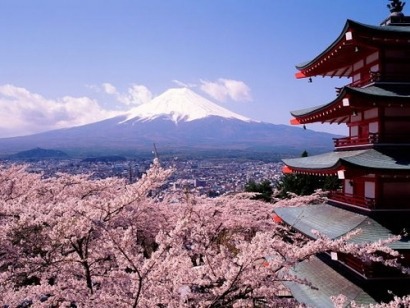
Now that a year has passed since the devastating March 11, 2011, Great East Japan Earthquake and tsunami, we can reflect on the Fukushima Daiichi nuclear plant cleanup effort and the consequences of widespread radioactive contamination. Over 160,000 Japanese remain displaced, their homes and businesses destroyed, and many loved ones were lost to the surging tsunami waters. Yet, having experienced countless earthquakes and tsunamis and the destruction of entire cities in World War II, it comes as no surprise that the Japanese have shown great resilience and resolve in coping with this latest disaster and getting on with their lives.
The Japanese government estimates that 28 million cubic meters (37 million cubic yards) of tsunami waste needs to be disposed of, an amount equal to 11,000 Olympic-size swimming pools. Progress has been slow because of the difficulty in finding secure sites for storing the waste. One option is to build a large waste storage facility in the Futaba Region, home to the disabled nuclear plant and 74,000 evacuees, but local resistance is strong. Futaba reportedly has spots where the radiation is 100 times higher than the acceptable annual exposure limit, and the last thing residents want is for radioactive waste piles to further contaminate their communities.
Only about 5 percent of the waste has been cleaned up so far. Much of the concrete debris can be recycled, but wood waste is more of a problem because it is difficult to reuse. Another issue is convincing local governments outside of the disaster-hit prefectures to accept some of the waste for disposal – possibly up to 10 percent of the total. Given the current rate of disposal, it will be nearly impossible to meet the government’s goal of completing the cleanup by March 2014.
According to the New York Times (A Confused Nuclear Cleanup), the Japanese government will initially issue 13 billion USD in cleanup contracts to rehabilitate a 21,000 square kilometer area (over 8,000 square miles), nearly as big as the State of New Jersey. This includes about two-thirds of the 260 square kilometer (100 square mile) radiation-contaminated evacuation zone around the stricken plant; there are no plans at present to clean up the remaining one-third, where radiation levels are too high to be reduced to safe levels with current technology.
The Japanese government has close ties to the nuclear power industry, and it has not gone unnoticed by critics that the first three cleanup contracts went to construction companies that helped build 45 of Japan’s 54 nuclear plants. The companies say they alone have the know-how and equipment to do the job, but one cleanup laborer interviewed by the Times expressed his view that they are all amateurs: “Nobody really knows how to clean up radiation.”
In an attempt to meet climate change goals set under the Kyoto Protocol, Japan had planned to increase nuclear power capacity to more than half of its total electricity requirement by 2030. Now, all that has changed, and the outlook for renewable energy sources like solar and wind power has brightened.
Additionally, last month the Environment Ministry announced last month plans to allow power generation by extracting geothermal heat from the nation’s national parks.
The future of the Japanese nuclear industry is unclear. Currently, only two reactors remain in operation, and these units are scheduled for shut-down and maintenance by late April. There is strong public resistance to building more nuclear plants and restarting those currently out of operation: recently 12,000 demonstrators, including Nobel Prize-winning author Kenzaburo Oe, amassed in downtown Tokyo, demanding an end to nuclear power. Regardless, safety testing of many of the idled reactors continues, with the goal of starting some up in time for the summer air conditioning season, when power consumption often peaks.
The Japanese have always been a resourceful people who valued the simple things in life, and perhaps this lifestyle helped them cope with the loss of homes and possessions. But the suffering of so many families losing loved ones, many swept out to sea, must be unbearable. At last count, over 19,000 Japanese are dead or missing – entire villages disappeared.
Eastern Japan will be rebuilding for years to come, and volunteers are still in short supply in some of the hardest hit areas. The Japan Times has an excellent English-language web page on how to help.
Readers wanting to learn more about radiation exposure in daily life may be interested in the figure and table from Japan’s Ministry of Education, Culture, Sports, Science, and Technology available here.
[Editor's note: Richard Crume works as an environmental engineer and teaches a class on air pollution, climate change, and renewable energy at North Carolina A&T State University. He lives in Chapel Hill, North Carolina (US).]
[Photo inset: Goya vines growing outside a freeway rest-stop restaurant in central Japan]

